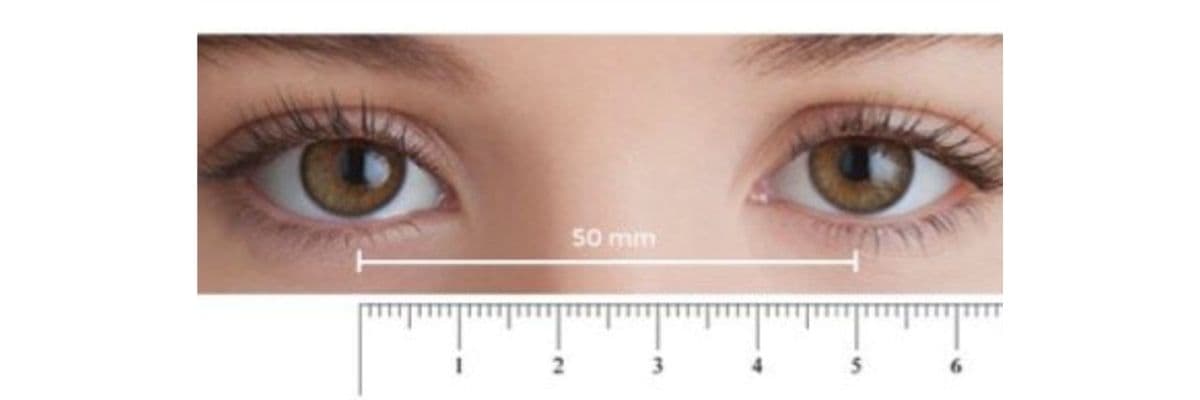What information should I know when ordering glasses online?

Many people are still afraid of shopping online, especially when it comes to "delicate" things like shoes or even glasses. But nowadays it's the most convenient, easiest way to buy your essentials and there's no need to be afraid of it.
Just like buying shoes or clothes, choosing the right glasses is as easy as knowing a few basic values and the rest is child's play!
The dioptre or, in some cases, the cylinder is determined by an ophthalmologist, but there is one more piece of information that is necessary to make the perfect pair of glasses and that we can determine and measure ourselves: the PD value. (The term Power is used as a synonym for dioptre in many cases.)
The PD - or Pupillary Distance - is the distance between the two pupils and plays a key role in the effectiveness of your spectacles.
Tips for measuring PD at home:
- Standing in front of a mirror, place the starting mark of a millimeter ruler at the center of the pupil of your left eye, then trace the line across your nose to the point where the ruler reaches the center of your right pupil.
- A is the pupil distance, measured in millimetres, between the two points. Ask a friend or family member to help you easily and simply determine your PD distance using the ruler method above.
- Pupil Distance Meter apps for your phone: you can measure the distance between your pupils using a phone app, all you need is a credit card. Just hold the card directly under your nose, horizontally, with the black stripe pointing towards the phone's camera. The app can then measure the distance between the two pupils. Here's a little video help:

Spectacle lens data
Before buying glasses, a vision test is carried out by an eye care professional. During the eye test, an ophthalmic report is prepared. The report will include three basic values for making spectacles: Diopter (SPH), Cylinder (CYL), and Axis (AX). These parameters determine which lens should be made for the spectacles.
It is possible that the values of the ophthalmic findings and the values on the invoice of the finished spectacles are not the same. However, this is not an error and does not mean that a different lens has been made.
The explanation for this is very simple. Lenses can be made with negative or positive curvature adjustment, which is determined by the manufacturers. On the basis of the parameters of the lenses marketed, ophthalmic technicians can match the need to the manufacturer's product by a simple mathematical calculation. This way, despite the different data, the parameters of the lenses produced will match the data in the ophthalmic report.
Conversion is sometimes necessary because the lenses may be manufactured differently. This method ensures perfect vision.
We have a wide range of quality frames for you!
Once we have all the information we need, all we need to do is find the frame we like and your new glasses are ready! To get the perfect pair of glasses, we recommend you have a vision test.
In the eOpticians.co.uk webshop you can choose from hundreds of guaranteed high quality and original frames, so you are sure to find the one that best suits your taste and expectations!
